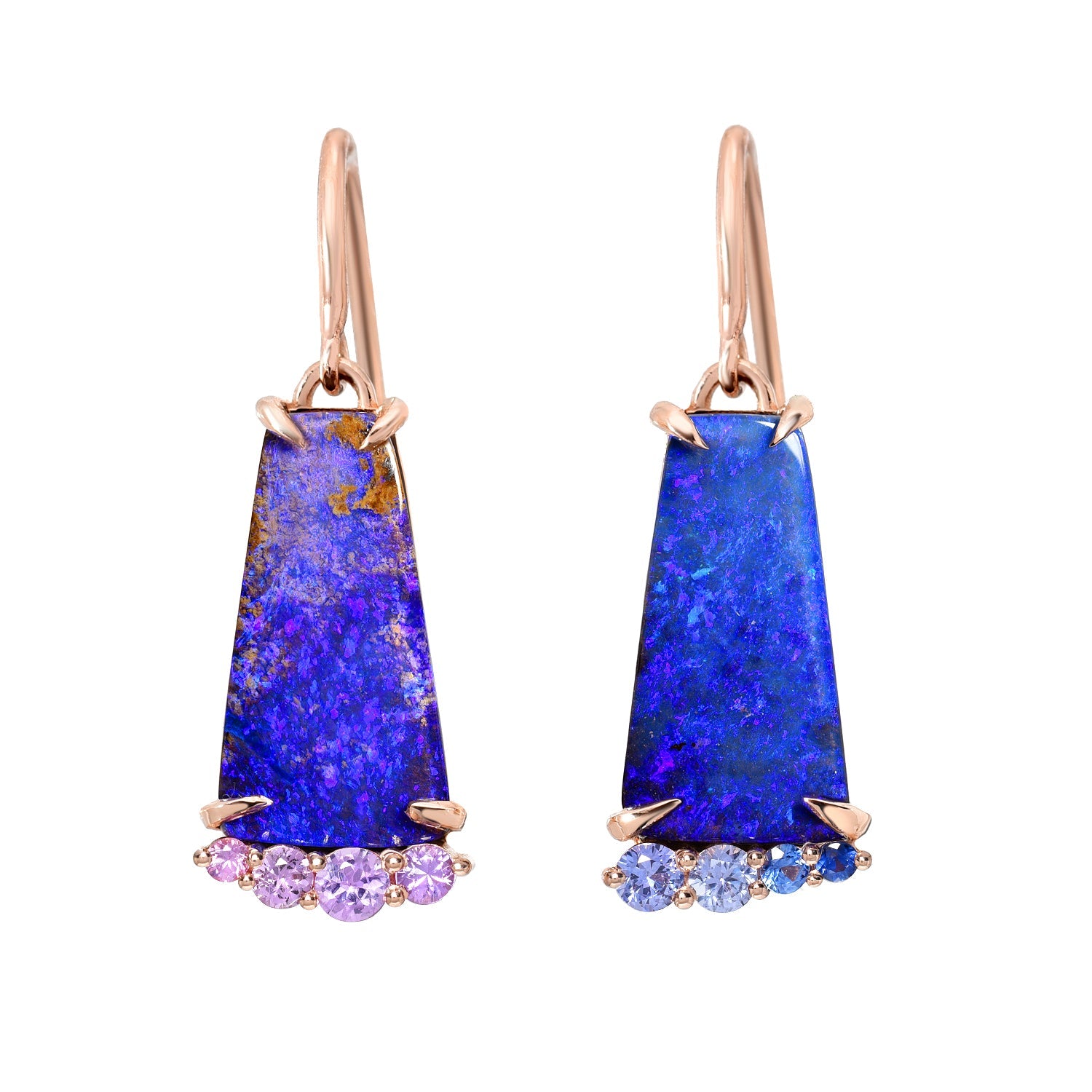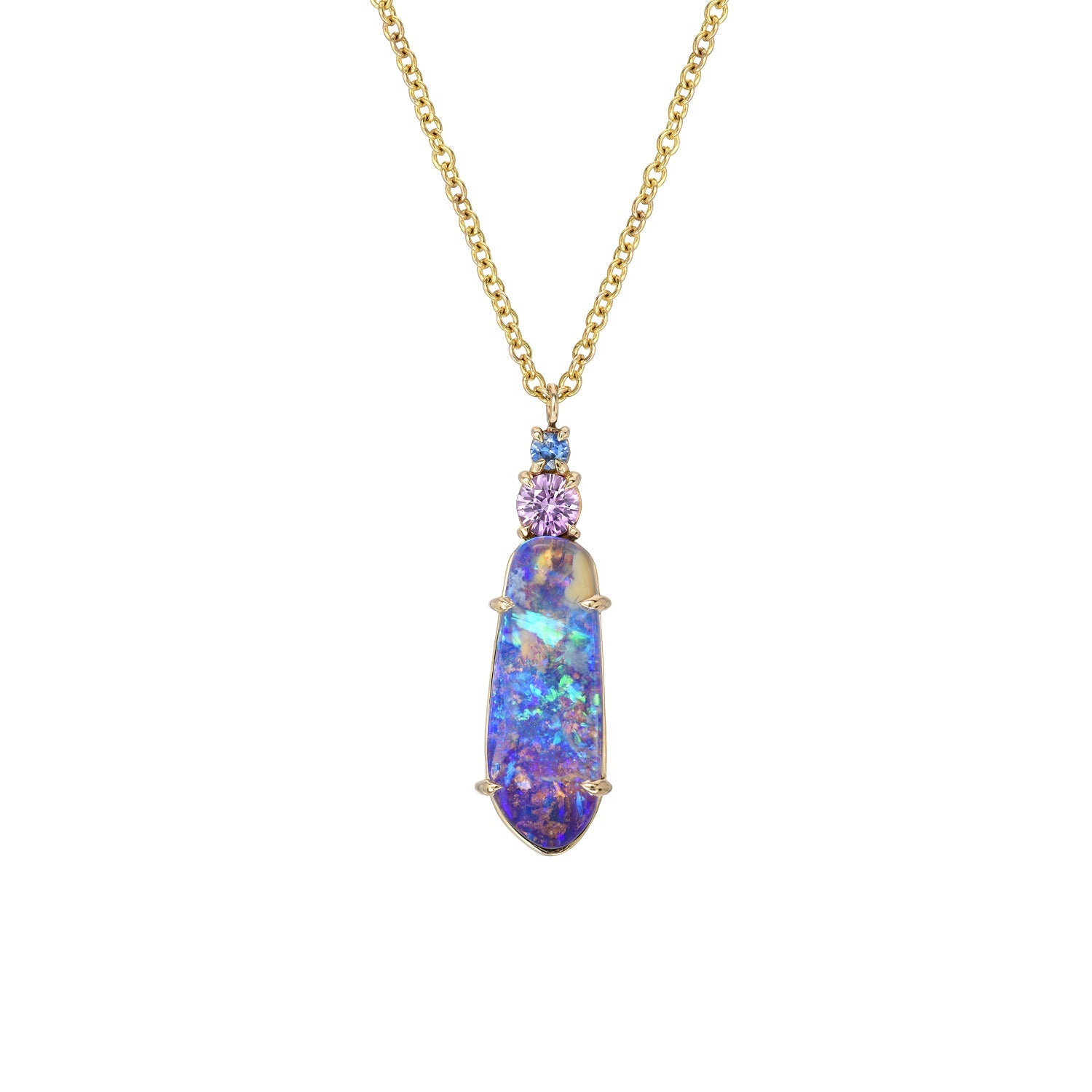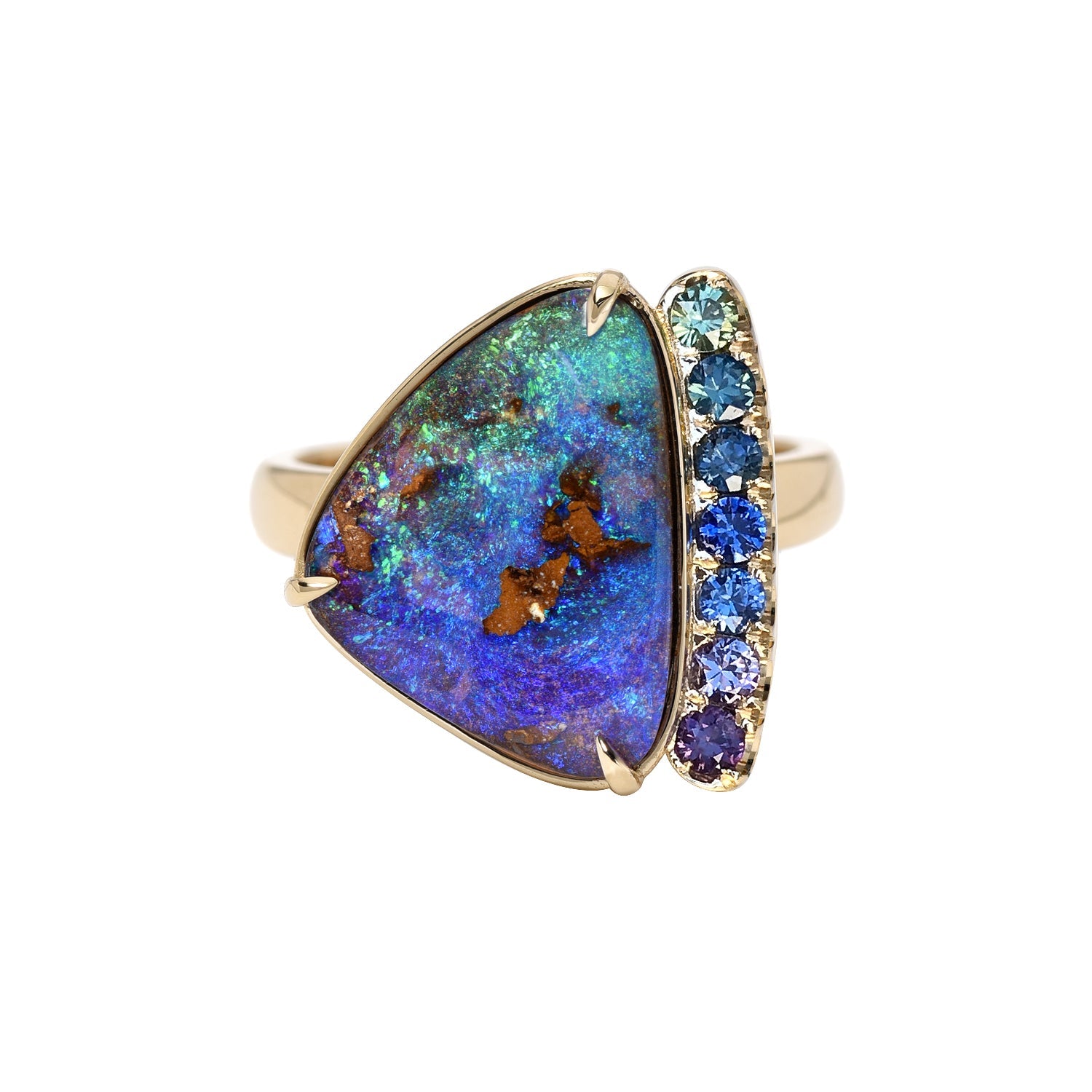
Black Opals --- How are they formed, how are they valued, what makes them so great?
luis gomezShare
What makes black Opals so valuable, and by consequence so expensive? What about them causes prices to skyrocket. In this article, we’re going to address a couple of key questions regarding the price of black opals; primarily why black Opals cost so much and how they are valued in the market, so you as a consumer know what to keep in mind when shopping for black Opal jewelry. Let's answer the question, why are the most famous Opals in history Black Opals?
How is Opal formed
Before we can understand why black Opals are so valuable and what makes them so unique, we first have to sink our teeth into how this distinct gemstone is formed from a purely geological perspective.
Opals, from their inception, are slowly nurtured in mother nature’s womb. The formation of Opals requires a unique series of specific geological, biological, and climatic phenomena to occur in concurrence. Different forces of nature not only interact but concede and merge together enabling the formation of the elusive gemstone. This is why it’s only found in certain regions of the world, and also why more than 95% of it is mined in certain parts of Australia.

The Black Prince, one of the most famous Black Opals in existence.
The various phenomena that contribute to the creation of Opals extend all the way back to the time of the T-Rex, to the Cretaceous period. These are the very same phenomena that would later coincide and mesh together to give black Opals their distinctive hue.
Australia, between 145-65 million years ago, wasn’t a dry continent but an inland sea full of corals, minerals, and soon-to-be fossils. Towards the end of the Cretaceous period, the water ebbed and flowed. The gradual recession and refilling over millions of years resulted in deposits of rich marine sands, full of silica, fossils, and other nutrients ideal for Opal formation. Voids, cracks, and fissures in the ground started to sponge up this silica-rich solution. All of that “soup” began to flow down into the soil. Experts believe it took this river, with silica, water, and decomposed biological material, up to 5 million years to form a 1 cm thick deposit of Opal.
The internal structure of Opal enables its unique diffraction of light. That same diffraction is what produces all the colors it’s known for exhibiting like purple, red, yellow, blue, magenta, rose, pink, green, especially when these colors reflect upon the ever-elusive black Opal.
Black Opals the Mother of All Gemstones
In 1601, William Shakespeare, in one of his lesser-known plays - Twelfth Night - called Opals a “miracle” and on that same script he coined the phrase “the mother of all gemstones.” He was referring not only to Opals in general, but more specifically to black Opal. But what makes black Opals so valuable, so desirable to consumers, and such prized possessions for fine jewelers?

This one was certainly hard for us to part with… Papilio Blumei Black Opal Ring.
Black Opals, more than other types of Opals, are quite rare. More specifically, true gem quality black Opals are exceptionally rare. Natural black Opals are formed in very few places on the planet — Australia being one of them. Not only that, most are found on one solitary spot on that continent, the legendary Lightning Ridge mining town. Lightning Ridge is a small town with approximately 2000 people living and working in it. It is a town whose primary industry is Opal mining. Its infrastructure, the market, the commerce, the whole town model are crafted around this industry.
Lightning Ridge is the world’s predominant producer of black Opals. Not only that, but it mines these gemstones ethically and responsibly, following key governmental rules and regulations. Why is this important? Because there are a finite number of Opals left. It would take eons, not to mention the right combination of circumstances, for a new Opal deposit to form - a set of impervious obstacles to overcome within our lifetime. So, in other words, once we’ve mined what’s left of these gemstones, they are most likely gone forever.
Rare Black Opals can be found in Australia. This is due to the geological make-up of the material. Australia’s - let's call it “primordial Opal soup” is made up of a unique set of ingredients that other opal-procuring places can't quite reproduce. Although some countries like Mexico, Honduras, the US and Ethiopia have generated beautiful Black Opal, it's not of the same inherent make-up. Together, other countries make up 5% of global Opal mining, and they didn’t have Australia’s wild menagerie of prehistoric beasts, nor did they share the land’s same climate and magma pressure which contributed to black Opal's distinctive color.

Lightning Ridge, Australia.
How do Black Opals get their color?
Black Opals aren't really black — they have a natural backdrop to them called “potch” or common opal, that gives them their dark body color. The color bar atop the potch generally appears more vibrant, the darker the potch background it sits upon. Opal's main ingredient is silica, which is also the key component in glass, that’s why it reflects light so successfully. Opals, black, in particular, get their colors from silica, or more to the point, from the way water evaporates and leaves behind these silica deposits. These deposits are spherical and they stack up - one on top of the other. The size of the spheres and the regularity of their arrangement determines the colors and patterns within the resulting gem. This stacking formation creates tiny little gaps between the spheres that allow light to pass through them and split into a rainbow of patterns.
Most other gemstones, diamonds, for example, get their color from the elements present during their formation. A diamond will turn blue only if Boron is present during its creation. In the case of black Opal, it gets its base hue from the decomposed matter found in the soil during its formation, and it gets its rainbow patterns from the evaporation of water and the leftover silica.
How Are Black Opals Graded?
Black Opals can be valued by a qualified appraiser who considers a multitude of variables, including:
- The Body Tone: the background color of the stone.
- The Play of Color: the range of color exhibited by the stone..
- The Brilliance: how bright and clear colors appear when the gem is faced up.
- The Patterns: the constant repeating of colors throughout the entire stone.
Black Opals, due to their color, can eventuate all these elements. They contrast differently and more vibrantly the darker their dark body tone. If you’re interested in getting a more in-depth education on how Opals are valued in the market, follow this link.
NIXIN Jewelry offers a collection of handcrafted Australian opal rings, opal necklaces, opal bracelets and opal earrings in an array of sizes and styles. Ready to ship opal jewelry and jewelry cleaner also available. Also be sure to check out or collection of black opal jewelry!




2 comments
CD – thank you for this correction! And yes, you are absolutely correct; there are other parts of the world that produce Black Opal. I’ve corrected this oversight. In fact, it’s interesting you mention Nevada – I’ve been meaning to research the Roebling Opal…curious if there’s a connection to the Roebling Family that built the Brooklyn Bridge.
Thanks for chiming in!
Nicki
Australia is not the only place where black opals have them in the united states and canada and some of the most valuable black couples have come out of nevada